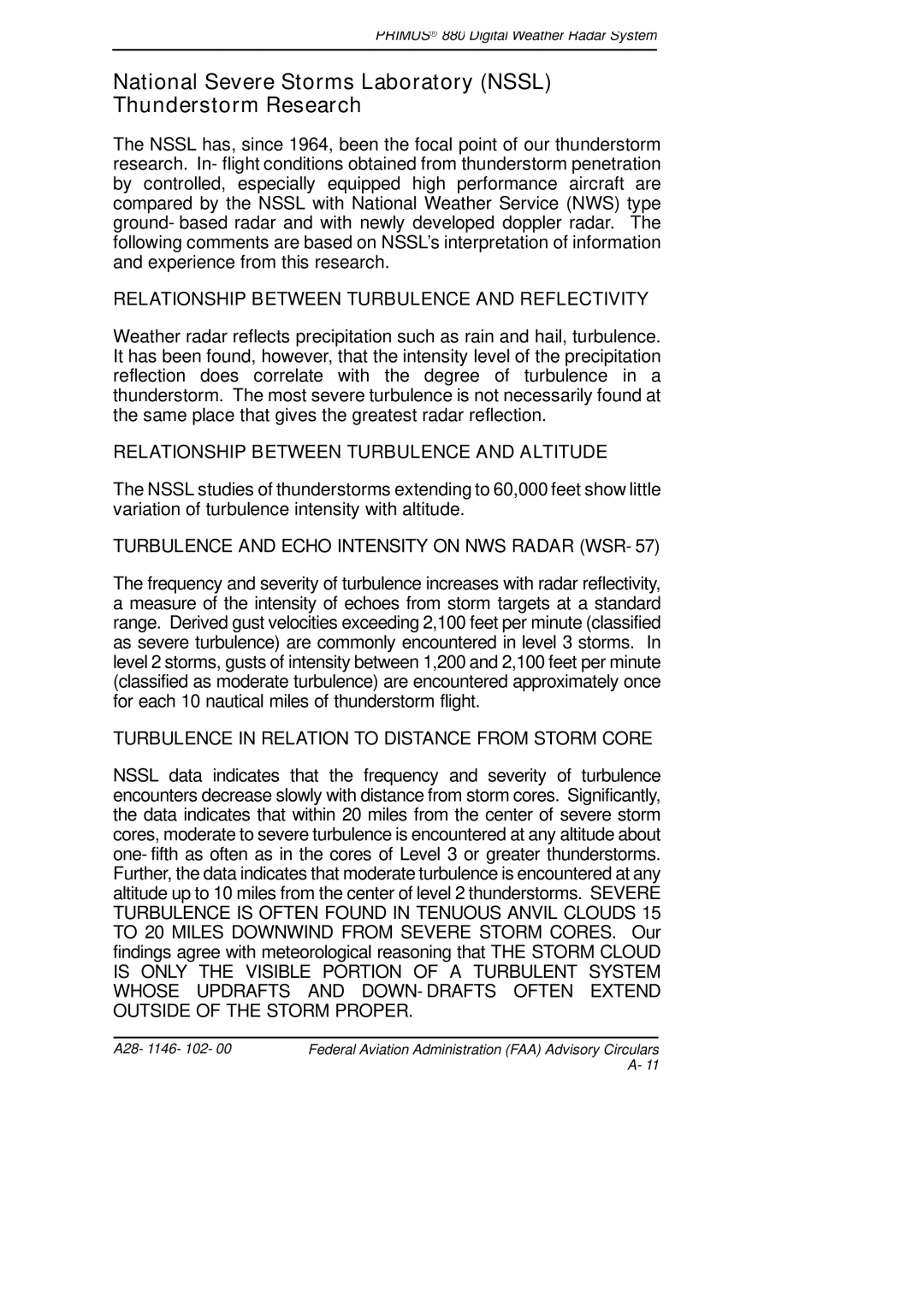
PRIMUSr 880 Digital Weather Radar System
National Severe Storms Laboratory (NSSL) Thunderstorm Research
The NSSL has, since 1964, been the focal point of our thunderstorm research. In- flight conditions obtained from thunderstorm penetration by controlled, especially equipped high performance aircraft are compared by the NSSL with National Weather Service (NWS) type ground- based radar and with newly developed doppler radar. The following comments are based on NSSL’s interpretation of information and experience from this research.
RELATIONSHIP BETWEEN TURBULENCE AND REFLECTIVITY
Weather radar reflects precipitation such as rain and hail, turbulence. It has been found, however, that the intensity level of the precipitation reflection does correlate with the degree of turbulence in a thunderstorm. The most severe turbulence is not necessarily found at the same place that gives the greatest radar reflection.
RELATIONSHIP BETWEEN TURBULENCE AND ALTITUDE
The NSSL studies of thunderstorms extending to 60,000 feet show little variation of turbulence intensity with altitude.
TURBULENCE AND ECHO INTENSITY ON NWS RADAR (WSR- 57)
The frequency and severity of turbulence increases with radar reflectivity, a measure of the intensity of echoes from storm targets at a standard range. Derived gust velocities exceeding 2,100 feet per minute (classified as severe turbulence) are commonly encountered in level 3 storms. In level 2 storms, gusts of intensity between 1,200 and 2,100 feet per minute (classified as moderate turbulence) are encountered approximately once for each 10 nautical miles of thunderstorm flight.
TURBULENCE IN RELATION TO DISTANCE FROM STORM CORE
NSSL data indicates that the frequency and severity of turbulence encounters decrease slowly with distance from storm cores. Significantly, the data indicates that within 20 miles from the center of severe storm cores, moderate to severe turbulence is encountered at any altitude about one- fifth as often as in the cores of Level 3 or greater thunderstorms. Further, the data indicates that moderate turbulence is encountered at any altitude up to 10 miles from the center of level 2 thunderstorms. SEVERE TURBULENCE IS OFTEN FOUND IN TENUOUS ANVIL CLOUDS 15 TO 20 MILES DOWNWIND FROM SEVERE STORM CORES. Our findings agree with meteorological reasoning that THE STORM CLOUD IS ONLY THE VISIBLE PORTION OF A TURBULENT SYSTEM WHOSE UPDRAFTS AND DOWN- DRAFTS OFTEN EXTEND OUTSIDE OF THE STORM PROPER.
A28- 1146- 102- 00 | Federal Aviation Administration (FAA) Advisory Circulars |
| A- 11 |
